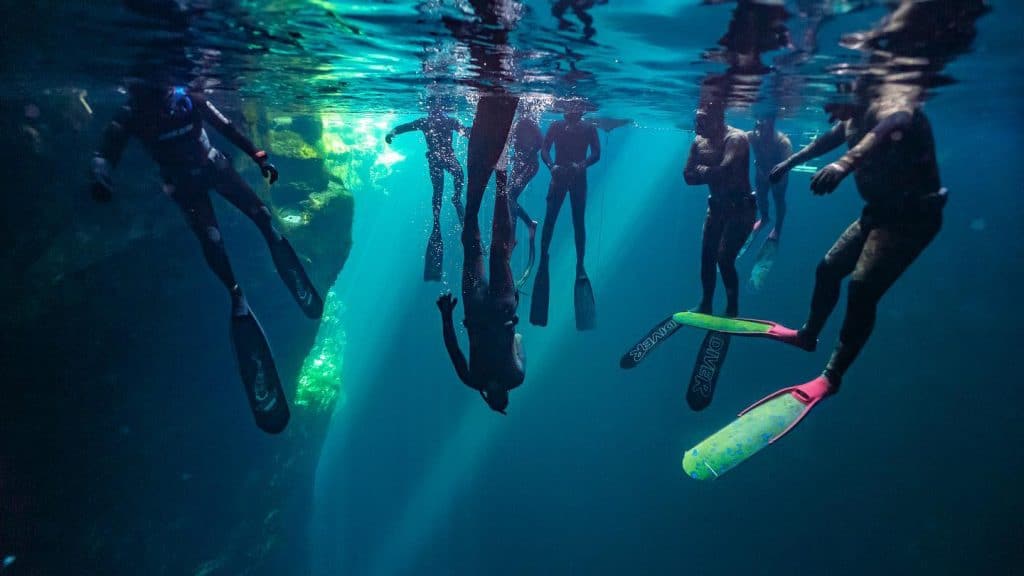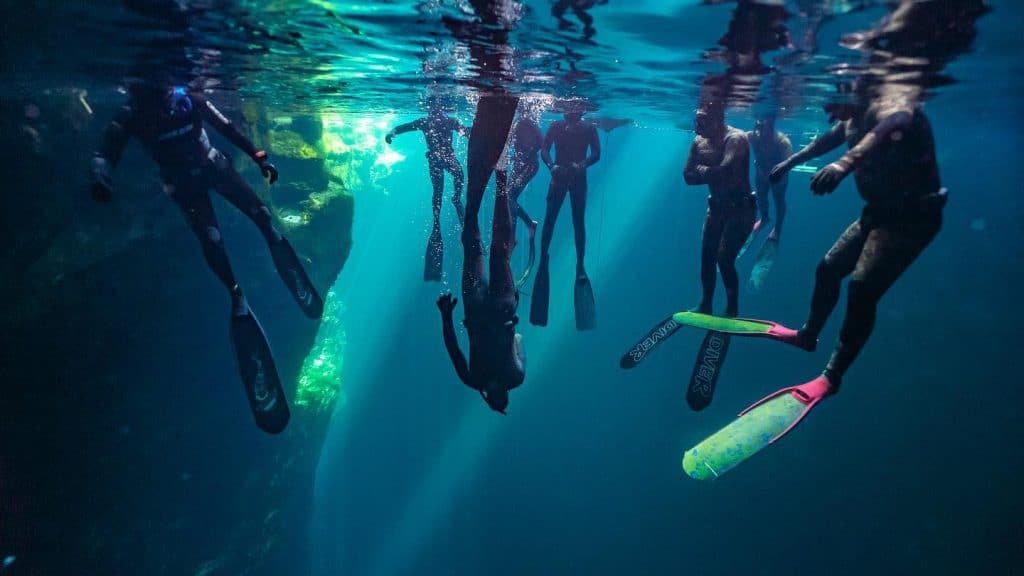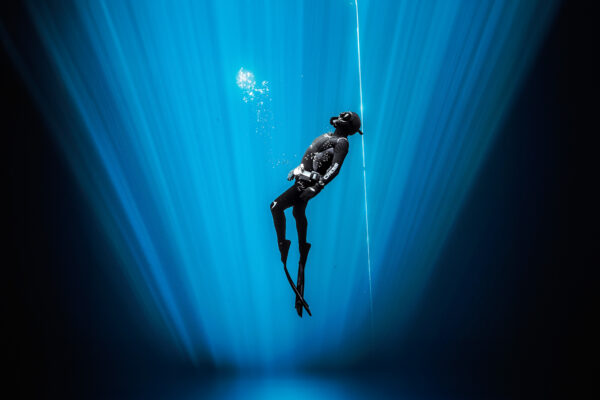Training to dive to 40m.
Becoming a Master Freediver requires new skills and challenges. With some practice, especially the equalising techniques and a bit of fitness, the 32m required depth is quite achievable.
But it is quite possible to get to this depth with a host of bad techniques and lack of skills. Bad techniques can still get you to 30m but good techniques will get you to much greater depths! Going to 40m and beyond requires a refinement in duck-dives, finning techniques or no-fins technique, proper mouthfill, precise equalising techniques, thoracic adaptation to depth and better fitness.
The duck-dive is where it starts at the surface. A poor duck-dive can cause an elevation in heart rate, wasted energy and a mental stumble at the very start of a long dive. Making the duck-dive a focal point of practice for every dive will ensure a polished entry that becomes an effortless habit.
Repeated pool training in the various disciplines, while concentrating on technique and not just distance will refine techniques to a smoother, more economical form. Having techniques critiqued by a pool buddy or even better, videoed, will allow one to view your techniques and easily see the
adjustments that need to be made. It requires a consistent effort to concentrate on technique whilst doing every swim in the pool, until it all becomes second-nature.
Training for mouthfill requires a lot of practice and only trying it whilst doing a deeper dive is not the answer. It is quite possible to do RV dives in a shallow pool and practice a mouthfill and an EQ on the bottom. This makes it really easy and quick to repeat, recover and repeat many times in a session. Taking this to the line dives, it is better to adapt the same method of doing shallow training. Doing RV dives to 3-5m to start, progressing to 10m deep whilst doing mouthfill and EQ will simulate the same pressure on the diaphragm, chest and throat as the 30-40m dives. These should all be done without contractions to avoid trachea squeeze. There is a lot more comfort and assurance doing these at shallow depth near the surface, than diving to 25-30m to try a mouthfill and EQ. These dives can also be done on FRC but doing them to 10-15m with a hang, will allow the time to do the required mouthfill and EQ. Extending the hanging time with progress will achieve the longer dive time required for the greater depths. These FRC dives should also be done without contractions.
A session of deep diving on the line should not total more than 200m. Consistent dives over 30m will put stress on the airways, start to create O2 debts and can expose the diver to nitrogen (maybe not narcotic but can cause extra fatigue).
The correct method is to do repeated dives in the 10-30m range. By strengthening the EQ, getting comfortable with the pressure and refining techniques, will almost guarantee an easy attempt to 40m.
Doing slow FIM dives and even hangs to 15-20m can be a great way to build your dive time. It’s still relatively safe on the lungs at these depths, close enough to the surface to feel comfortable and isn’t psychologically challenging. Dive times should be passive, NO time watching and extending dive-time to get PB’s.
A dive to 40m should take 1.20-1.30 minutes so if this time is comfortably achieved at these shallower depths, then it’s a good sign that 40m can be achieved comfortably.
Once the 25-30m depths have been mastered, consistent dives with no EQ issues, no discomfort on the diaphragm, chest and throat and the same quality dives throughout, then a comfortable dive to 40m is easily achievable.
Warren H – Master Student




